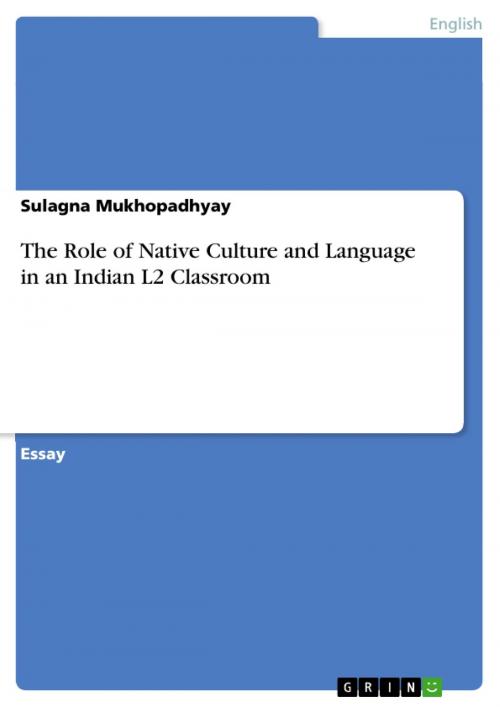The Role of Native Culture and Language in an Indian L2 Classroom
Nonfiction, Reference & Language, Study Aids, ESL, Foreign Languages| Author: | Sulagna Mukhopadhyay | ISBN: | 9783656032762 |
| Publisher: | GRIN Verlag | Publication: | October 19, 2011 |
| Imprint: | GRIN Verlag | Language: | English |
| Author: | Sulagna Mukhopadhyay |
| ISBN: | 9783656032762 |
| Publisher: | GRIN Verlag |
| Publication: | October 19, 2011 |
| Imprint: | GRIN Verlag |
| Language: | English |
Essay from the year 2010 in the subject English Language and Literature Studies - Culture and Applied Geography, University of Kassel (English Language and Literature Studies), course: Conference, language: English, abstract: The main aims/questions that will be discussed in this paper are the importance and need of learning English in today's world right from the primary stage and the hindrances in teaching the English Language in a non-English speaking country, for example India. Teaching English becomes more and more relevant particularly in a multilingual and multicultural country like India. In the framework of a comparative study projecting eclectic teaching Methodology examples from the classroom will be presented and discussed. Taking a pan-Indian view on the country's education system, we observe that not only are there various types of schools catering to each section of the Indian society, correspondingly there are various boards of education following different English Language and Literature syllabi. A significant difference is also observed between the private and the government schools in this regard. Today each Indian child has to learn English. Keeping this in mind, teaching methodologies are designed. English language course designers in India are trying to bridge the multicultural and multilingual gap as perceived in the indigenous cultures, languages and religions. We follow an eclectic method within the classrooms to develop the four skills in Communicative English. More workshops and exchanges between teachers' experiences across the world would help us overcome the hurdles.
Essay from the year 2010 in the subject English Language and Literature Studies - Culture and Applied Geography, University of Kassel (English Language and Literature Studies), course: Conference, language: English, abstract: The main aims/questions that will be discussed in this paper are the importance and need of learning English in today's world right from the primary stage and the hindrances in teaching the English Language in a non-English speaking country, for example India. Teaching English becomes more and more relevant particularly in a multilingual and multicultural country like India. In the framework of a comparative study projecting eclectic teaching Methodology examples from the classroom will be presented and discussed. Taking a pan-Indian view on the country's education system, we observe that not only are there various types of schools catering to each section of the Indian society, correspondingly there are various boards of education following different English Language and Literature syllabi. A significant difference is also observed between the private and the government schools in this regard. Today each Indian child has to learn English. Keeping this in mind, teaching methodologies are designed. English language course designers in India are trying to bridge the multicultural and multilingual gap as perceived in the indigenous cultures, languages and religions. We follow an eclectic method within the classrooms to develop the four skills in Communicative English. More workshops and exchanges between teachers' experiences across the world would help us overcome the hurdles.















